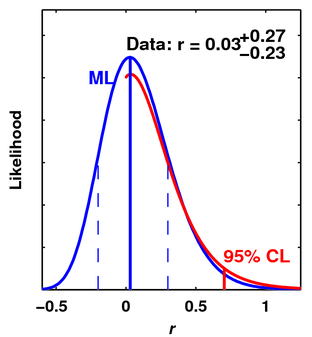New CMB Results from BICEP1

Last week we published new results from the BICEP1 Cosmic Microwave Background (CMB) polarization experiment. (Disclaimer: I'm a coauthor of the paper.) BICEP1 is the first in a series of experiments at the South Pole searching for the signal of cosmological Inflation in the CMB. BICEP1 took data in 2006--2008, but this is the first result to include all three years of data. (Results from the first two years of data were published in 2009.) Nevertheless, it's still the best limit on inflation from CMB polarization.
The signal BICEP1 searched for is one predicted by Inflation, the exponential expansion posited to have occurred in the early Universe. One of the predictions of Inflation is the creation of a gravitational wave background throughout the Universe. At the time the CMB was created, these gravitational waves would have created a unique polarization pattern. This polarization pattern, called "B-modes," is useful because Inflation is the only known physical process that creates B-modes in the early Universe on large angular scales. (There are other processes such as gravitational lensing that can create B-modes in the late Universe.) Thus observation of B-modes from the early Universe would be strong (there is some debate about how strong) evidence that Inflation actually happened.
BICEP1 did not detect evidence of this signal from Inflation or any other source of B-modes. Instead, we set a limit on the Inflation signal based on the statistical uncertainty in the measurement. This limit is reported in terms of the "tensor-to-scalar ratio," r. This is the ratio of energy in gravitational waves (also known as tensor perturbations) to energy in scalar perturbations, which were also created by Inflation and grew into the structures like galaxies that we observe today. The limit set by BICEP1 is r < 0.70, which is the best reported to date using CMB polarization alone. However, from less direct measurements (especially of the CMB temperature anisotropy) we know r < 0.11. We, as well as several other groups, are working on more sensitive polarization experiments that can potentially detect B-modes below this level.
As well as more data, this new result introduces two major analysis improvements for CMB polarization. The first is a "deprojection" technique that removes effects of temperature-to-polarization leakage. The CMB is only weakly polarized, and experiments have imperfections that can cause a true unpolarized signal to appear partially polarized. The combination of these two facts means that instrumental imperfections can create spurious polarization signals that might be comparable to the true polarization. To counter this effect, we developed a technique that removes the modes in the data that might be contaminated by these imperfections. The other major analysis improvement is a method for converting the results into limits on r that makes fewer approximations. This more exact method removes biases that were present in some previous calculations. One of the major reasons for publishing this paper despite the modest sensitivity improvement is demonstrating these new techniques. We expect them to be even more useful in combination with much more sensitive data from future experiments.
- Log in to post comments